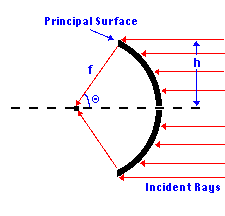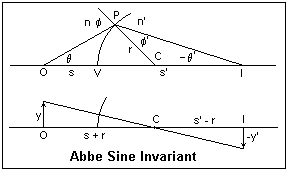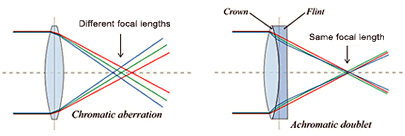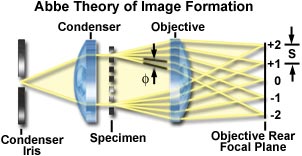Abbe sine condition
The Abbe sine condition (in short: sine condition or even rarer Abbe condition) is a fact of geometrical optics and was formulated by Ernst Karl Abbe. It is a necessary condition to freely represent a small achsnahes and achssenkrechtes surface element of image errors.
One regards this, rays emanating from the axis point of said surface element. The angle of intersection of such a beam with the optical axis is in the object space and the image space. The refractive index in the object space is, in the image space. The sine condition is:
The quotient on the left is so for all the above-mentioned radiation equal, and this constant is the paraxial image scale. Sufficiently however, the sine condition is not. Only when, in addition to the spherical aberration is corrected for the axis point of said surface element, it is actually mapped image errors.
At infinite object distance, the above-mentioned beams are not on the object side is defined by the cutting angle, since they all run parallel to the optical axis, but also by its distance from the optical axis. Sine condition then moves in:
With the image-side focal length.
The sine condition must also be satisfied outside the paraxial region of optical systems, which represent a small field with a large opening. This applies eg for microscope objectives. A single refracting or reflecting spherical surface has three pairs of points that satisfy the sine condition and without error opening pictures ( aplanatic point pairs ).
- Optics
- Ernst Abbe










